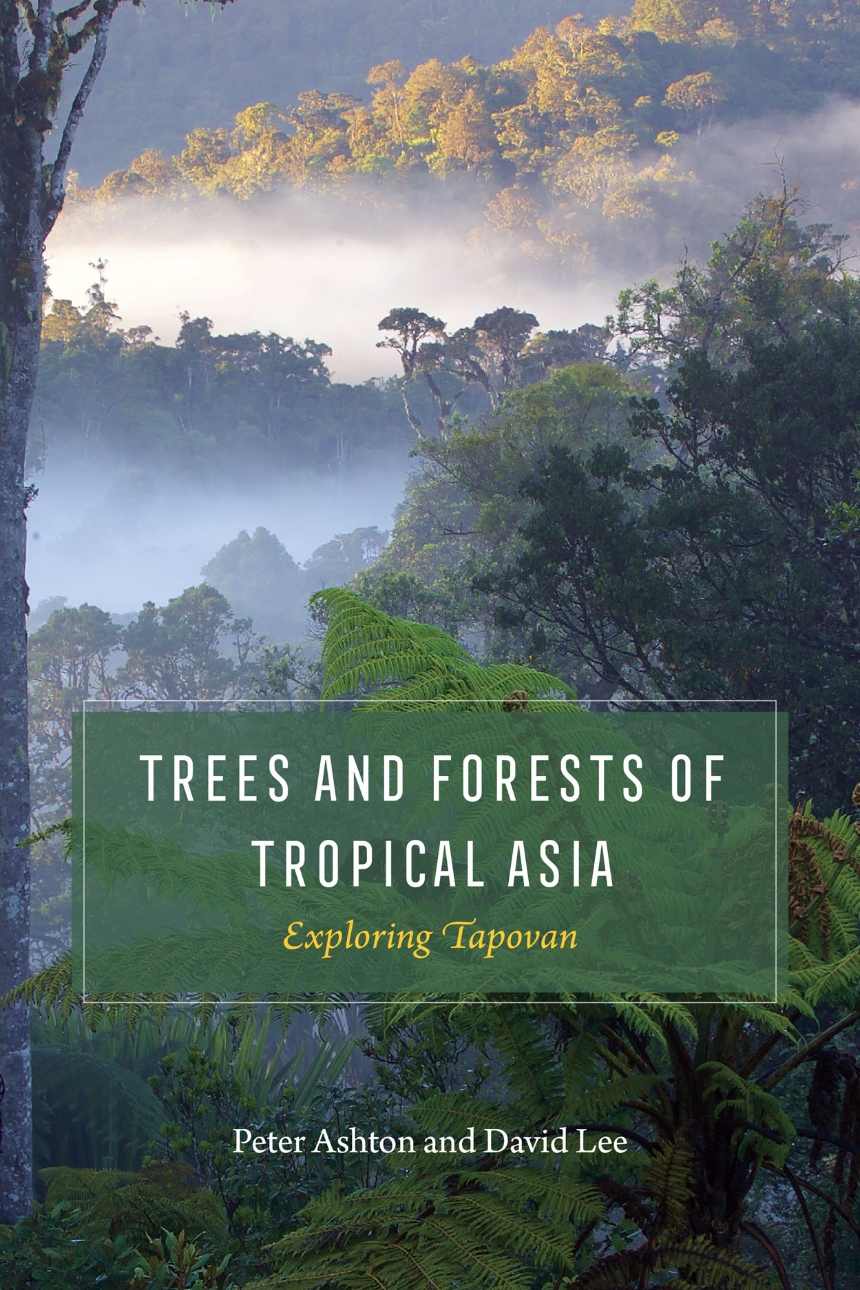Trees and Forests of Tropical Asia
Exploring Tapovan
Informed by decades of researching tropical Asian forests, a comprehensive, up-to-date, and beautifully illustrated synthesis of the natural history of this unique place.
Trees and Forests of Tropical Asia invites readers on an expedition into the leafy, humid, forested landscapes of tropical Asia—the so-called tapovan, a Sanskrit word for the forest where knowledge is attained through tapasya, or inner struggle. Peter Ashton and David Lee, two of the world’s leading scholars on Asian tropical rain forests, reveal the geology and climate that have produced these unique forests, the diversity of species that inhabit them, the means by which rain forest tree species evolve to achieve unique ecological space, and the role of humans in modifying the landscapes over centuries. Following Peter Ashton’s extensive On the Forests of Tropical Asia, the first book to describe the forests of the entire tropical Asian region from India east to New Guinea, this new book provides a more condensed and updated overview of tropical Asian forests written accessibly for students as well as tropical forest biologists, ecologists, and conservation biologists.
Trees and Forests of Tropical Asia invites readers on an expedition into the leafy, humid, forested landscapes of tropical Asia—the so-called tapovan, a Sanskrit word for the forest where knowledge is attained through tapasya, or inner struggle. Peter Ashton and David Lee, two of the world’s leading scholars on Asian tropical rain forests, reveal the geology and climate that have produced these unique forests, the diversity of species that inhabit them, the means by which rain forest tree species evolve to achieve unique ecological space, and the role of humans in modifying the landscapes over centuries. Following Peter Ashton’s extensive On the Forests of Tropical Asia, the first book to describe the forests of the entire tropical Asian region from India east to New Guinea, this new book provides a more condensed and updated overview of tropical Asian forests written accessibly for students as well as tropical forest biologists, ecologists, and conservation biologists.
448 pages | 145 color plates, 15 halftones, 19 tables | 6 x 9 | © 2022
Biological Sciences: Botany, Conservation, Ecology, Paleobiology, Geology, and Paleontology, Tropical Biology and Conservation
Reviews
Table of Contents
Preface
1 The Asian Tropics
2 Forests in the Landscape
3 Geology
4 Climates
5 Soils
6 Plants of the Asian Tropics
7 Lowland Everwet Forests: Structure and Dynamics
8 Forests of the Seasonal Tropics
9 Tree Species Composition in Tropical Lowland Forests
10 Abode of the Clouds
11 Trees and Their Mobile Links: Pollination
12 Trees and Their Mobile Links: Dispersal and Survival
13 Phylogeography
14 Forest and Tree Diversity: Why Does It Vary, and How Is It Maintained?
15 People in the Forest
16 Forest History: The European Influence
17 Forest History: Independence
18 Future Forests
Acknowledgments
Appendixes
Appendix A—Geological Time Line
Appendix B—ForestGEO
Appendix C—An Ecotourism Guide to Tropical Asian Forests
Illustration Credits and Abbreviations
Index
1 The Asian Tropics
2 Forests in the Landscape
3 Geology
4 Climates
5 Soils
6 Plants of the Asian Tropics
7 Lowland Everwet Forests: Structure and Dynamics
8 Forests of the Seasonal Tropics
9 Tree Species Composition in Tropical Lowland Forests
10 Abode of the Clouds
11 Trees and Their Mobile Links: Pollination
12 Trees and Their Mobile Links: Dispersal and Survival
13 Phylogeography
14 Forest and Tree Diversity: Why Does It Vary, and How Is It Maintained?
15 People in the Forest
16 Forest History: The European Influence
17 Forest History: Independence
18 Future Forests
Acknowledgments
Appendixes
Appendix A—Geological Time Line
Appendix B—ForestGEO
Appendix C—An Ecotourism Guide to Tropical Asian Forests
Illustration Credits and Abbreviations
Index
